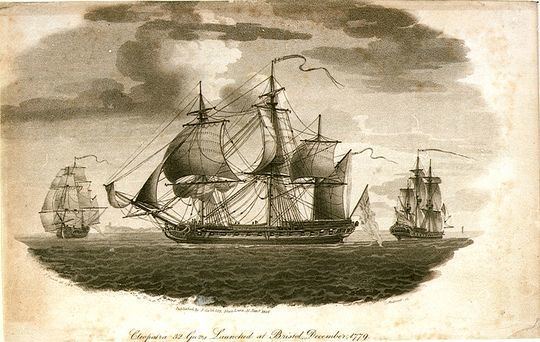Former type Private Defunct 1845 Founded 1772 | Fate Closed Headquarters River Avon, UK Ceased operations 1845 | |
 | ||
Successor Yard taken over by Charles Hill & Sons | ||
Hilhouse (also spelled Hillhouse) was a shipbuilder in Bristol, England who built merchantman and men-of-war during the 18th and 19th centuries. The company subsequently became Charles Hill & Sons in 1845.
Contents
The company, and its successor Charles Hill & Sons, were the most important shipbuilders in Bristol, and taking the concern together built over 560 ships over their 200 years of existence.
Origins
The shipbuilding concern Hilhouse and Company was first established in 1772 by James Martin Hilhouse, after inheriting a fortune from his father, James Hilhouse, a Bristol Sheriff and councillor who also ran a successful privateering venture. The company acquired the large Hotwells drydock, built by the engineer William Champion in 1765 on the north side of the River Avon, to build merchantman and undertake ship repair work. From 1778, Hilhouse secured Admiralty contracts for warships following the outbreak of the American Revolutionary War, including for the fourth rate Trusty.
On 28 September 1785, Hilhouse launched the 1,406 tonne 64-gun Ardent-class ship of the line Nassau, which was the largest ship yet built in Bristol. By 1786 they had built twelve warships of 3rd to 6th rates before orders became dominated by merchantmen.
Hilhouse and Company built ships
Major ships built by Hilhouse and Company:
Hilhouse & Sons built ships
In 1803 the company became Hilhouse & Sons and Company and expansion continued. By 1810, Charles Hill had joined the firm, and Hilhouse had acquired two further dockyards in city, Wapping dockyard, near Prince Street in 1813, and Limekiln Dock, on Gasferry Lane on the north side of the river in 1820. In 1814 the company built the first steamboat in Bristol, the Charlotte and Hope. In 1820 the company developed New Dockyard opposite the original site at Hotwells, what was to become the Albion Yard, and built two wet docks, a dry dock and building berths. This lead within 4 years to the closure of both the Wapping and Hotwells Dockyards. The West Indiaman Weare of 446t was the first launch from the Albion Yard in 1820.
During the 1830s and 1840s William Patterson launched the ground breaking SS Great Western and SS Great Britain steamships in the adjacent Bristol dockyard, and the company subsequently lost out on important subsequent orders.
Major ships built by Hilhouse & Sons and Company:
Enter Charles Hill
In 1824 the company became George Hilhouse & Company, and the following year a young shipwright by the name of Charles Hill became a partner, eventually leading in 1840 to the name of the business becoming Hilhouse, Hill & Company. Charles Hill subsequently took over running more and more of the business, and in 1845 he took sole control of the business and the firm became Charles Hill & Sons.
The Hilhouse built Albion Yard has continued in use up until this day, currently as Abels Shipbuilders.
